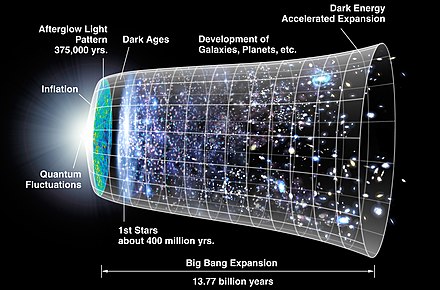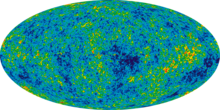This article needs additional citations for verification. Please help improve this article by adding citations to reliable sources. Unsourced material may be challenged and removed.Find sources: "Timeline of the early universe" – news · newspapers · books · scholar · JSTOR (October 2016) (Learn how and when to remove this template message)

The timeline of the early universe outlines the formation and subsequent evolution of the Universe from the Big Bang (13.799 ± 0.021 billion years ago) to the present day. An epoch is a moment in time from which nature or situations change to such a degree that it marks the beginning of a new era or age.
Times on this list are measured from the moment of the Big Bang.

